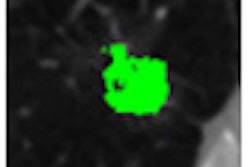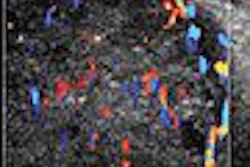
On November 15, 2007, coronary CT angiography (CTA) saved my life. That was the day I had a CTA exam that revealed blockage in my coronary arteries. Here is the rest of my story.
In May 2007, the critical-access hospital where I work purchased a new 64-slice CT scanner with software to perform CTA studies. Following the purchase, I discussed with the imaging manager the need to secure "volunteers" to undergo a CTA study to afford the technologists the opportunity to be trained on our equipment.
 |
| Jim Pittman of Bedford Regional Medical Center in Bedford, IN. |
Due to many circumstances, it was several months following the purchase of the equipment before the training could be scheduled. As a 63-year-old man with a family history of heart problems and other risk factors, I quickly volunteered.
Not only do I have high blood pressure and elevated cholesterol, I have a family history of heart problems. My father died as a result of a massive heart attack when he was 54 years old, and my only brother suffers today as a result of a heart attack he suffered when he was just 37. He has endured a life of suffering following this attack, which resulted in him undergoing a triple-bypass surgery and subsequent heart attacks and multiple catheterizations and surgeries that have left him disabled and now confined to his home.
Following my CTA study, Dr. Tim Lach (our hospital's radiologist) consulted with me and revealed the news that I had significant blockage in the right coronary artery (RCA). He advised me to have a cardiology workup.
Following that discussion, I met with my internist, who has been very proactive in treating my elevated blood pressure and cholesterol, and has performed biannual cardiac stress tests, with my latest one being performed in February 2007.
All of my stress tests have been normal, and with me being asymptomatic, there had been no need for any further testing. However, with the results of the CTA, she scheduled me for a cardiac catheterization with a cardiologist in Indianapolis.
Prior to the catheterization on November 29, 2007, the cardiologist said the CTA results could be a false positive, because I was asymptomatic and doing well. But after the catheterization, he informed me that my situation was worse than expected, and that the cath revealed blockages of 80% in the RCA, 60% in the left anterior descending (LAD) artery, and 40% in the circumflex artery.
Subsequently, on December 5, I had a drug-eluting stent placed in the RCA. The plan was to treat the other blockages with medication.
I returned for a follow-up visit with my cardiologist on January 24, at which time I had a nuclear stress test performed that revealed poor perfusion in the left lower part of the heart. I was then scheduled for another stent placement in the LAD artery with the 60% blockage, to improve the blood flow to this part of the heart.
I am now participating in cardiac rehab and doing very well, but I truly believe that had I not volunteered for the CTA study, I certainly would have either developed symptoms from the blockage or had a heart attack. I am grateful for the opportunity I was afforded by having the CTA study performed that very well may have saved my life.
By Jim Pittman
AuntMinnie.com contributing writer
February 28, 2008
Jim Pittman is vice president of operations at Bedford Regional Medical Center in Bedford, IN.
Related Reading
Coronary CTA's time is now, according to Dowe, January 17, 2008
How 64-slice CT saved my life: A radiologist's story, February 7, 2006
Copyright © 2008 AuntMinnie.com




















